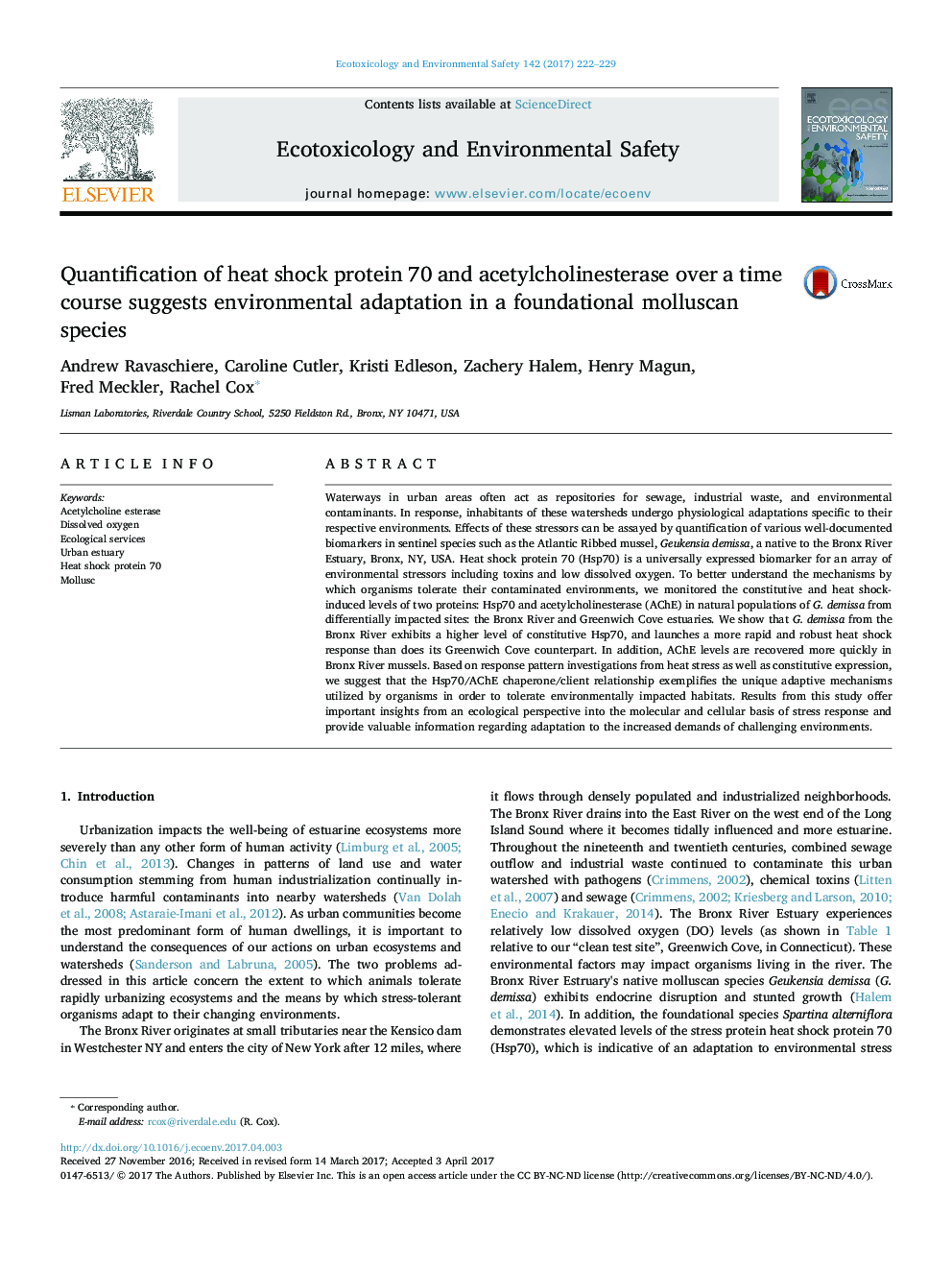| Article ID | Journal | Published Year | Pages | File Type |
|---|---|---|---|---|
| 5747607 | Ecotoxicology and Environmental Safety | 2017 | 8 Pages |
Abstract
Waterways in urban areas often act as repositories for sewage, industrial waste, and environmental contaminants. In response, inhabitants of these watersheds undergo physiological adaptations specific to their respective environments. Effects of these stressors can be assayed by quantification of various well-documented biomarkers in sentinel species such as the Atlantic Ribbed mussel, Geukensia demissa, a native to the Bronx River Estuary, Bronx, NY, USA. Heat shock protein 70 (Hsp70) is a universally expressed biomarker for an array of environmental stressors including toxins and low dissolved oxygen. To better understand the mechanisms by which organisms tolerate their contaminated environments, we monitored the constitutive and heat shock-induced levels of two proteins: Hsp70 and acetylcholinesterase (AChE) in natural populations of G. demissa from differentially impacted sites: the Bronx River and Greenwich Cove estuaries. We show that G. demissa from the Bronx River exhibits a higher level of constitutive Hsp70, and launches a more rapid and robust heat shock response than does its Greenwich Cove counterpart. In addition, AChE levels are recovered more quickly in Bronx River mussels. Based on response pattern investigations from heat stress as well as constitutive expression, we suggest that the Hsp70/AChE chaperone/client relationship exemplifies the unique adaptive mechanisms utilized by organisms in order to tolerate environmentally impacted habitats. Results from this study offer important insights from an ecological perspective into the molecular and cellular basis of stress response and provide valuable information regarding adaptation to the increased demands of challenging environments.
Keywords
Related Topics
Life Sciences
Environmental Science
Environmental Chemistry
Authors
Andrew Ravaschiere, Caroline Cutler, Kristi Edleson, Zachery Halem, Henry Magun, Fred Meckler, Rachel Cox,
